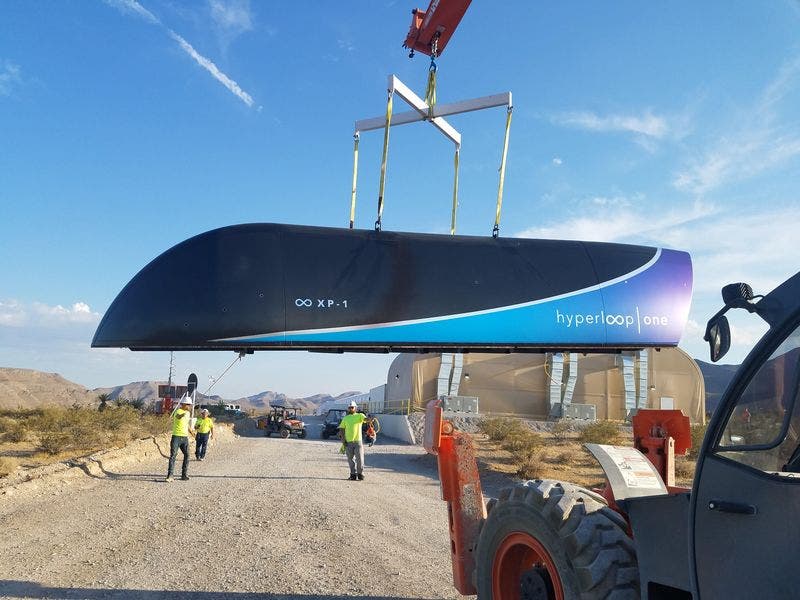On Wednesday, Hyperloop One successfully tested all the engineering components of a full working system for the very first time.
Essentially, a hyperloop is a pad whizzing through a pneumatic tube at tremendous velocity. The pod magnetically levitates inside the tube that’s in near-vacuum so there is no air resistance. This disruptive innovation has the potential to revolutionize how people and cargo move all around the world. Why? Because it should be extremely fast. Once completed a full hyperloop network ought to travel at a 700mph. There are no more congestion issues nor do people need to go through the hassle an airport. This means zipping from Los Angeles to San Francisco would take only 30 minutes as compared to a six-hour drive or an all-day train ride.
The concept was first proposed by Elon Musk, CEO of Tesla and SpaceX, a few years back but instead of working on it himself, the entrepreneur casually left the whole thing out in the open for others to make it happen. It didn’t take too long for other entrepreneurs to seriously get to work based on Musk’s 57-page paper on the Hyperloop concept. Hyperloop Transportation Technologies (HTT) was the first startup that responded to the call and uses a crowd collaboration approach i.e. a mix of team collaboration and crowdsourcing. HTT plans to open its first hyperloop systems in Slovakia and South Korea. Other notable companies include TransPod in Canada or AECOM and Arivo in the USA.
Hyperloop One, however, is by far the front runner for developing and testing the world’s first Hyperloop and the company that is hosting the Hyperloop One Global Challenge. In May 2017, they did their first propulsion test and already have a signed deal with the transport authorities of Dubai where they to install the first real hyperloop system. The plan is to have it up and running by 2019-2020 and make getting from Dubai to Abu Dhabi just a 12-minute ride.
This week’s full test of Hyperloop One’s solution consolidates the company’s position as the leader of the pack. At the test site, Hyperloop One also revealed the design for the pod that will supposedly carry people and cargo when the system will be operational. It’s made of aluminum and carbon fiber and looks a bit like a bus. However, the pod wasn’t used during this test. Instead, the engineers used a magnetically levitating test sled fire which reached 70mph in only five seconds.
“This is integrating all of the pieces,” says Josh Giegel, Hyperloop One’s engineering chief. “It’s the first phase of a test program that will get us to a production unit.”
Next for Giegel and colleagues is to run the test again; this time shooting for 250mph. Meanwhile, engineers will be busy improving the reliability and reducing the cost of the tubers. They have to convince stakeholders that the system is not only economically feasible but at least as safe as other available means of transportation.










